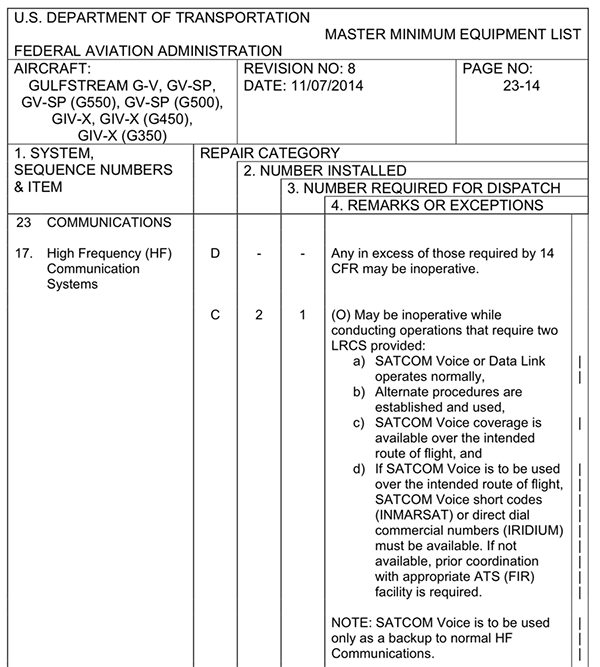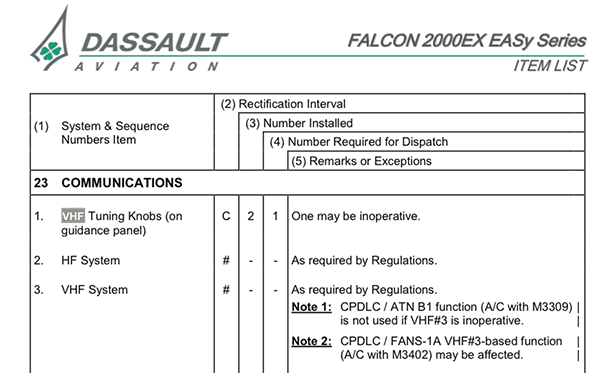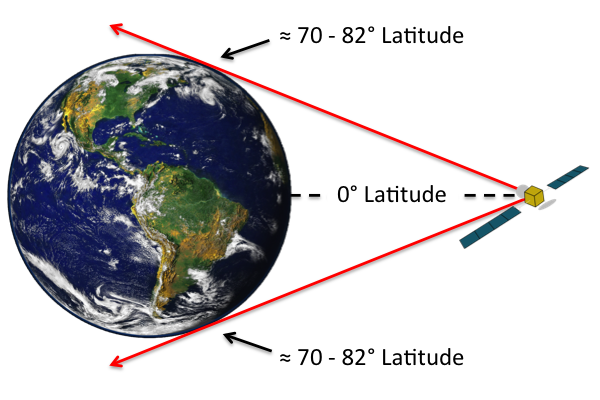We used to refer to the satellite phones in our cockpit as "SATCOM" because we were communicating via satellite. But the addition of data transmission has changed all that so it is important to have the new definitions in your head. According to ICAO Doc 9869, SATCOM is used only when referring to both voice and data satellite communication while SATVOICE is for satellite voice communications.
— James Albright

Updated:
2020-12-15
SATCOM is pretty much behind the scenes with other data communications and is effectively transparent to us as pilots. Your interfaces with CPDLC and ADS-C could be through SATCOM or VHF. It is all some form of data link to you.
SATVOICE is just another form of radio that allows you to talk to someone. Can you use SATVOICE to make a position report? In most parts of the world, yes. Can you use SATVOICE to replace the requirement for an HF? No, you still need at least one HF. Can you plan on using SATVOICE for air traffic services with an HF as backup? If the region you are flying has made such provisions and you have a qualified system, yes. But how do you know your system qualifies? The easiest way to tell is to look at your MMEL.
1 — SATVOICE as a Long Range Communications System (LRCS)
2 — Example aircraft SATVOICE LRCS

1
SATVOICE as a Long Range Communications System (LRCS)
Can SATVOICE be used as a LRCS? Yes.
In keeping with ICAO’s recognition of SATVOICE as a valid Long-Range Communication System (LRCS), the FAA accommodates SATVOICE through arrangements with the recognized Aeronautical Mobile Satellite (Route) Service (AMS(R)S) providers. Direct SATVOICE contact between the pilot and ATC is currently limited to distress and urgency situations, or other exceptional circumstances only.
Source: AC 91-70B, ¶4.3.3
The RCP 400/VRO allocations are applicable to the controller intervention capability via a radio operator using SATVOICE.
Source: ICAO Doc 9869, ¶3.2.1.1.
The SATVOICE system shall be capable of detecting loss of service, equipment failures and/or logon failures and provide indication to the controller/radio operator or flight crew of system status.
Source: ICAO Doc 9869, Table B-3
You can use SATVOICE to communicate, but the RCP is no better than your HF radio, and not every SATVOICE system qualifies. How do you know your SATVOICE qualifies? The easiest way is to research your MEL.
Does your SATVOICE qualify as a LRCS? Maybe.
- The regulations now address long-range communication requirements in terms of LRCS. With that as a basis, an aircraft on extended range segments unable to utilize line-of-sight systems must have at least two operational LRCSs to honor regulatory communication requirements (unless specifically excepted under the operational rules).
- While CPDLC enhances ATS communications for normal use, it is not adequate for non-routine and emergency communications and therefore not appropriate as a basis for MMEL relief of HF communication systems (ref. FAA Legal Interpretation dated 06 Dec 2011 regarding 14 CFR § 121.99 data/com in lieu of voice requirements). In addition, some ATS facility may not be capable of providing SATVOICE services as a LRCS. HF-voice is the only LRCS currently available for Air Traffic Control communications in many areas. Therefore, in areas requiring two operational LRCSs, at least one must be HF-voice when the MEL is applied. In areas requiring one LRCS, that system must be HF-voice.
Source: FAA MMEL Policy Letter (PL)106

FAA LRCS MMEL Policy, from FAA MMEL Policy Letter (PL)106, page 3.
This is the first document from the FAA that says you need two LRCS. You could get away with just one HF as your only means of long range communications until this came out. Now, if you don't have a qualified SATVOICE or CPDLC, you need two HFs.
2
Example aircraft SATVOICE LRCS
You cannot assume a satellite telephone installed in your aircraft qualifies as a suitable LRCS that can take the place of one HF. The satellite telephone must pass several security and Required Communications Performance (RCP) tests. The easiest way for you, the pilot, to tell if your system qualifies is to check your MMEL. The GV series MMEL, for example, was modified as a result as follows:

GV MMEL HF Systems, from GV MMEL, page 23-14.
Gulfstream has stated SATCOM Voice or Data Link can substitute as a backup to normal HF communications, so with this series of aircraft we are good to go.
What if you don't have such a statement in your MEL?

DA-2000 MMEL HF Systems, from DA-2000 MMEL, page 1-23-1.
This is an older copy of the DA-2000 MMEL for sake of illustration, they might have a qualified system and this may have changed. But for the purpose of this discussion, if what you see is something that doesn't mention your satellite phone system or an LRCS at all, you might not have a qualified system. You should ask your aircraft manufacturer for guidance.
3
ARINC SATCOM voice procedures
ARINC Communications Centers are equipped to receive and originate SATCOM Voice calls from or to suitably equipped aircraft. It is recognized that these systems, due to cost and other requirements, are still not available to a large number of aircraft; however, ARINC has the capability to use SATCOM Voice as an alternative means of communications for either ATC or AOC communications with those aircraft that have been equipped. The medium used for communications is transparent to the end user. All ARINC services using HF/VHF are available, and SATCOM Voice messages either can be relayed by the ARINC Radio Operator or the call-in progress can be connected to other phone lines (conferenced) through the telephone control system at each ARINC Communications Center.
Source: ARINC Handbook, ¶2.6
ARINC says the use of SATCOM is "transparent" to the end user, meaning ATC. Many of the ATC sources say you should use SATCOM in lieu of HF or CPDLC only in unusual circumstances.
Note: When using SATCOM voice, continue to use radio discipline procedures. Using the SATCOM phone like a regular telephone can cause misunderstandings and confusion.
Source: ARINC Handbook, ¶2.6
The phone call ends up with the HF radio operator who is expecting you to use the same terminology as if on HF.
More about this: Voice Position Reports.
Satellite Voice-equipped aircraft should direct calls to the appropriate ARINC Communications Center using either INMARSAT-assigned security phone numbers (ICAO short codes) or direct dial using the 10-digit PSTN phone number:
| Pacific Flights | Atlantic Flights |
| SFO 436625 | NYC 436623 |
| 1-925-371-3920 | 1-631-244-2492 |
Source: ARINC Handbook, ¶2.6
You will be using INMARSAT satellites but your aircraft may or may not have an INMARSAT phone. To use the short codes you need an INMARSAT phone.
Note: These six-digit numbers are converted by the Ground Earth Station (GES) receiving the aircraft call announcement to the respective PSTN dial number for connection to the appropriate ARINC Center. This only works on the INMARSAT satellite system.
After an answer by the ARINC Radio Operator, the parties should complete the exchange of information using the same procedures as would be used on other voice (HF/VHF) communications mediums.
Source: ARINC Handbook, ¶2.6
4
Line of sight and curvature of the earth issues
- All PLANEVIEW CMF transmissions, whether VHF or satellite, require line of sight to a VHF ground station or Inmarsat satellite, respectively.
- Transmitting by way of satellite while on the ground is generally reliable. Although, line of sight issues may still arise due to surrounding terrain and man made structures because the Inmarsat satellites are in an equatorial geostationary orbit. In flight, the curvature of the Earth is a concern only at latitudes greater than 70° North or South. Except at these high latitudes, satellite coverage while in flight is seamless.
Source: G450 Aircraft Operating Manual, §2B-21-40, ¶1.D.
Because INMARSAT satellites are in geostationary orbits over the equator, the curvature of the earth limits their use at the poles. While the G450 manual says you may have issues above 70° latitude, it is said that SATCOM is available for voice and data link up to 82°N.
The airborne SATCOM equipment links to one of the geostationary International Maritime Satellite Organization (INMARSAT) satellites, which in turn links to a ground earth station. The ground earth station then connects to a long distance telephone company, and then to a local telephone company. Once these connections are established, the airborne communication equipment communicates with the ground based equipment using the telephone company services.
Source: G450 Aircraft Operating Manual, §2B-22-30
References
(Source material)
Advisory Circular 91-70B, Oceanic and International Operations, 10/4/16, U.S. Department of Transportation
ARINC Voice Services Operating Procedures Handbook, ARINC, Annapolis, MD, 13393 Rev. R, September 27, 2006
Gulfstream G450 Aircraft Operating Manual, Revision 35, April 30, 2013.
Gulfstream GV Master Minimum Equipment List (MMEL), GV GV-SP (G550), GV-SP (G500), GIV-X (G450), GIV-X (G350), Revision 8, 11/07/2014
ICAO Doc 9869, Performance-based Communication and Surveillance (PBCS) Manual), Second Edition, 2017, International Civil Aviation Organization
FAA MMEL Policy Letter (PL)106, Revision 5 GC, June 6, 2014
Please note: Gulfstream Aerospace Corporation has no affiliation or connection whatsoever with this website, and Gulfstream does not review, endorse, or approve any of the content included on the site. As a result, Gulfstream is not responsible or liable for your use of any materials or information obtained from this site.
